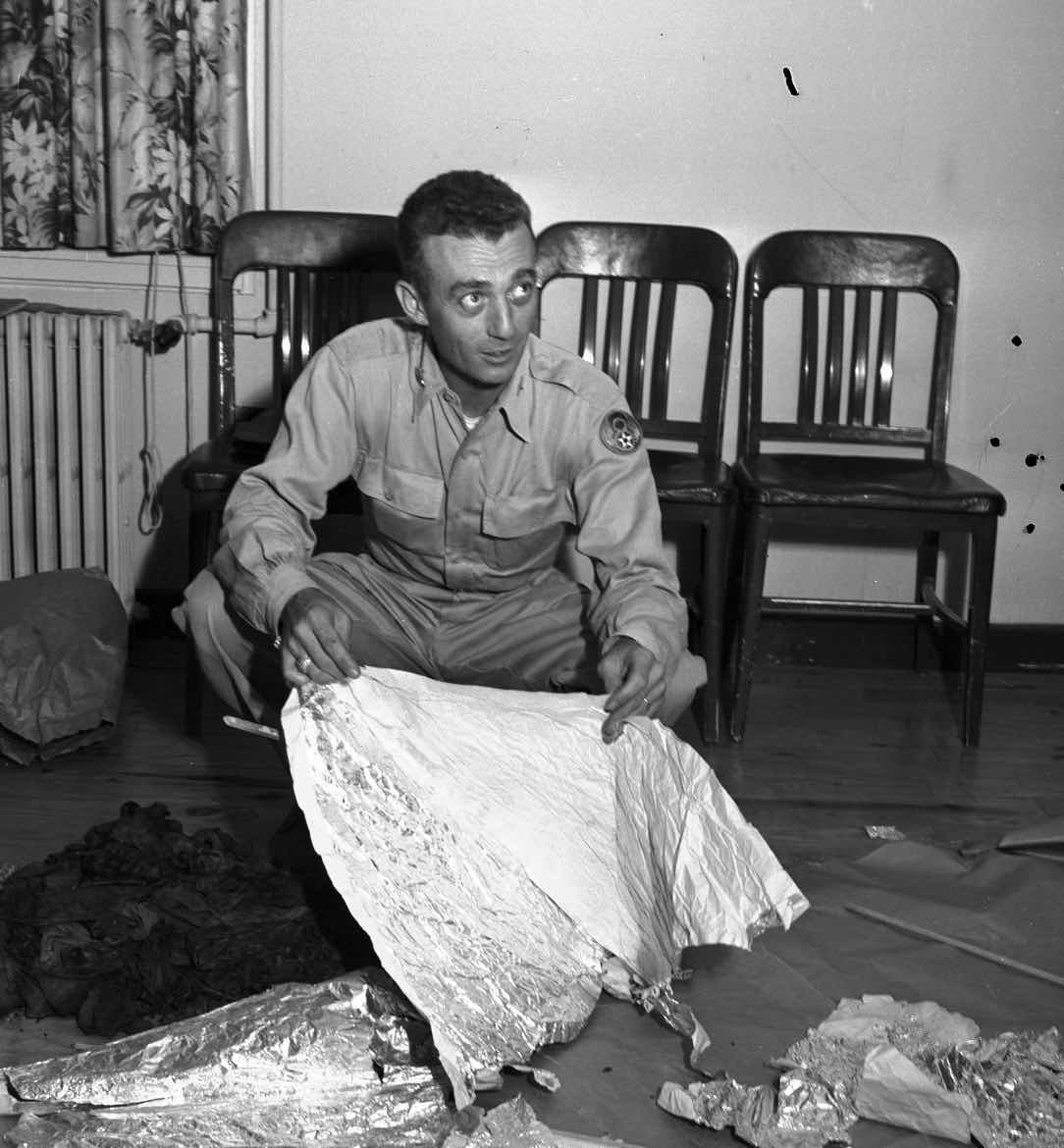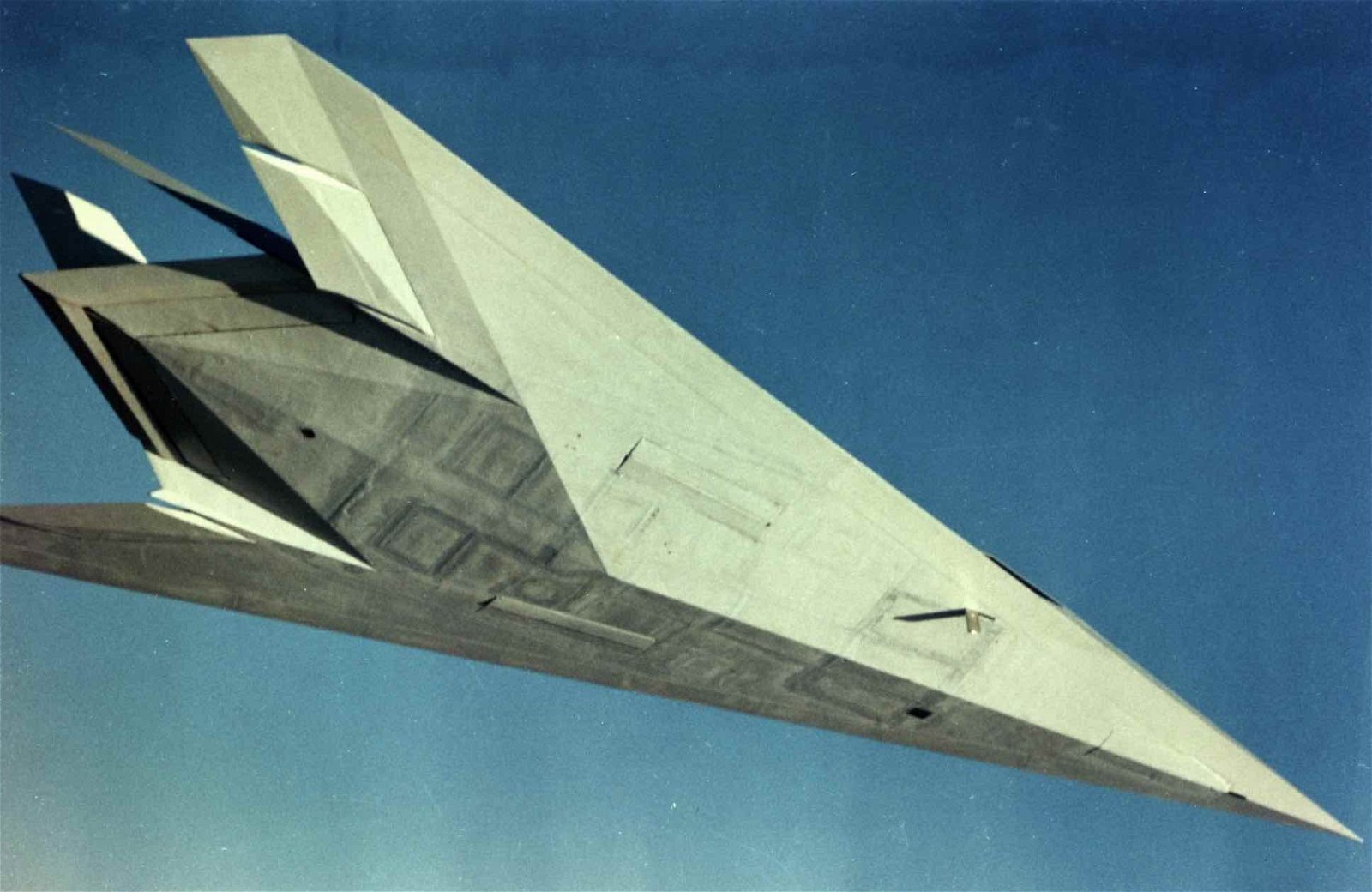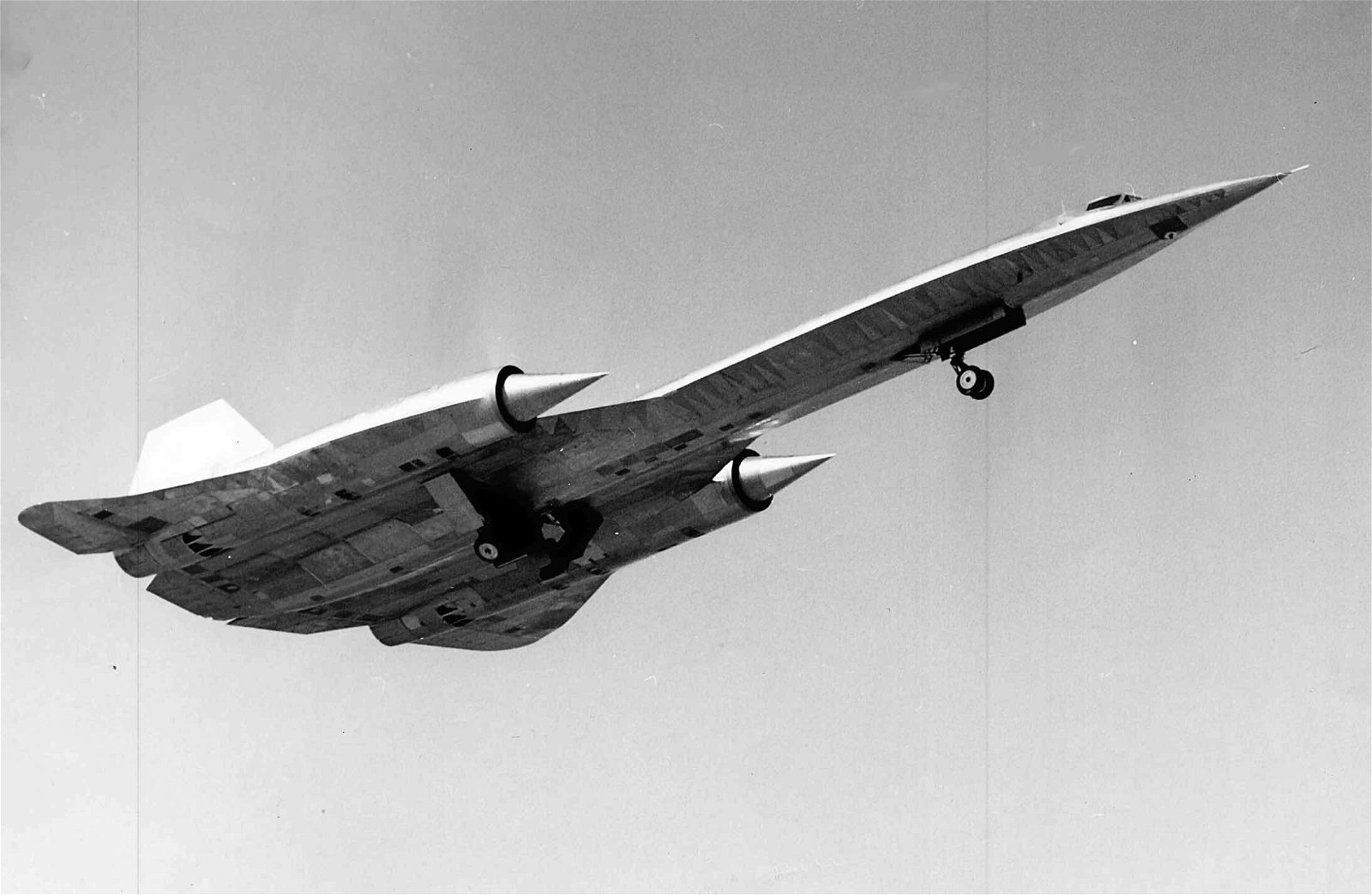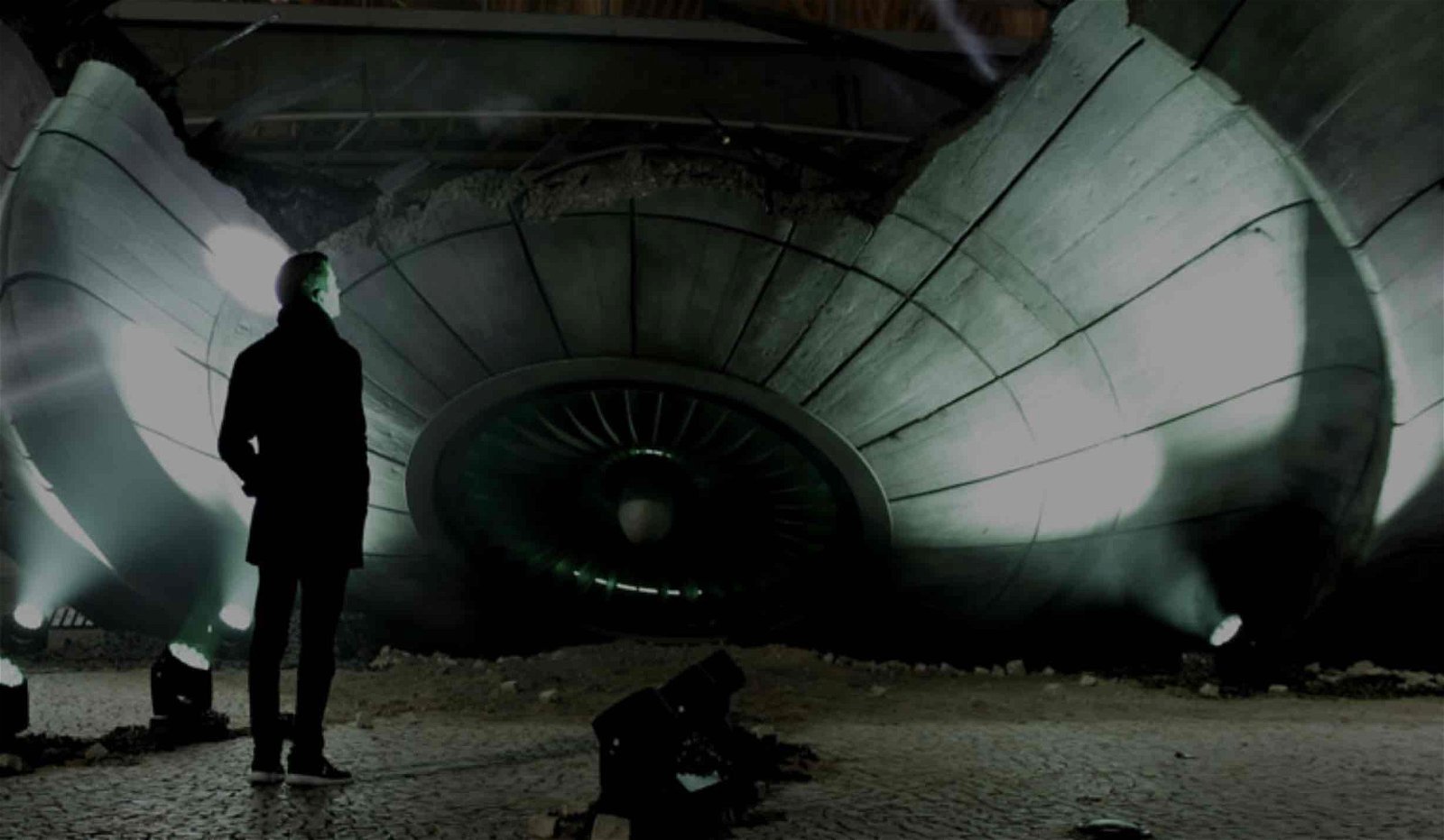A historical report issued by the Pentagon’s office tasked with the investigation of unidentified anomalous phenomena (UAP), commonly referred to as UFOs, says it found no evidence that sightings of mysterious aerial objects represent extraterrestrial technology, or that secret programs related to the recovery of crashed exotic vehicles have been hidden from Congress.
Released on Friday, the report is the first installment in a two-volume series produced by the Defense Department’s All-domain Anomaly Resolution Office (AARO) and explores the history of the U.S. government’s involvement in investigations of UAP under a requirement established in the fiscal year (FY) 2023 National Defense Authorization Act (NDAA).
“To date, AARO has not discovered any empirical evidence that any sighting of a UAP represented off-world technology or the existence a classified program that had not been properly reported to Congress,” the report said.
Citing investigations that revealed most sightings to result from the “misidentification of ordinary objects and phenomena,” the report acknowledged that “many UAP reports remain unsolved,” though adding that better data could lead to the resolution of some of the currently unresolved cases.
In advance of the report’s release, Tim Phillips, acting director of AARO on assignment from the Office of the Director of National Intelligence (ODNI), provided a briefing to a limited number of reporters on Wednesday, where he discussed the new report and revealed details about a new system called “Gremlin” designed to acquire real-time data on UAP. The Debrief did not participate in Wednesday’s media briefing.
Following the release of the report, Department of Defense spokesperson Sue Gough said in an email to The Debrief that “AARO reviewed all official USG investigatory efforts since 1945, researched classified and unclassified archives, conducted dozens of interviews and site visits, and partnered with the Intelligence Community and DoD officials responsible for special access program oversight.”
“AARO created a secure process in partnership with the highest-level security officials within the DoD, IC, and other organizations to research and investigate these claims,” Gough said. “AARO was granted full, unrestricted access by all organizations.”


Although there were notable exceptions, most media coverage of the new AARO report focused almost entirely on the lack of evidence linking UAP sightings to extraterrestrial technologies, as well as the absence of classified programs involved in the recovery of crashed vehicles of non-human origin.
Also commanding media attention had been revelations involving the existence of a proposed program pitched to the Department of Homeland Security in the 2010s under the codename “Kona Blue,” which involved a prospective reverse engineering program for any extraterrestrial technologies acquired by the U.S. government.
According to the AARO report, Kona Blue had been proposed by former members of a DIA program called the Advanced Aerospace Weapons Systems Application Program (AAWSAP), whose personnel are identified in the report as some of the main proponents behind ongoing assertions involving secret U.S. government UAP programs.
The report says that AARO investigators found no evidence that extraterrestrial craft or their occupants had ever been acquired by the U.S. military and that Kona Blue was ultimately rejected by DHS leadership due to a lack of merit.
Friday’s report was met with significant criticism online following its release, with many arguing that its findings were invalid, while others expressed skepticism over its assertions that no evidence of cover-ups involving crashed UAP retrieval programs had been found.
The report’s findings appear to run in stark contrast to whistleblower allegations that first received widespread public attention last June, involving an official complaint filed with the Intelligence Community Inspector General by David Grusch, a former U.S. intelligence officer whose duties included participation in the U.S. government’s investigations into UAP in recent years.
In January, Inspector General of the Intelligence Community Thomas Monheim spoke with members of the House Oversight and Accountability Committee during a classified briefing on UAP, with some who attended claiming it left them with more questions than answers regarding ongoing claims of secret programs and exotic technologies.
Following the release of AARO’s report on Friday, amidst all the attention surrounding what AARO investigators did or did not find, and programs that were proposed but never came to fruition, few mainstream outlets discussed the numerous intriguing allusions to legitimate advanced capabilities the U.S. possesses that are peppered throughout the report—many of which, in likelihood, actually have contributed to UAP sightings over the years.
These seemingly went unnoticed, as well as several factual errors that appear throughout the new report that, for some, potentially undermine the level of rigor AARO appears to have applied in its investigations.
Fact-Checking AARO’s Historical Report
Among the many mistakes that appear in the new report, one of the most glaring appears in references to the late Senate Majority Leader Harry Reid and his involvement in helping acquire funding for a controversial UAP investigative effort run out of the Defense Intelligence Agency in the early 2000s. The report refers to the Democrat Senator’s home state as being New Mexico, whereas Reid was a U.S. Senator from Nevada.
In another instance, a famous sighting reported by pilot Kenneth Arnold near Mount Rainer, Washington in the summer of 1947 is described as having taken place on “June 23,” one day earlier than Arnold’s sighting occurred.
The report similarly claims Arnold described the objects he observed as being “saucer-like aircraft”, although this now-famous characterization was only later applied by members of the media who, at the time, were referencing Arnold’s description of their movement resembling “saucers” skipping across water.
In yet another example, the AARO report repeatedly refers to a statistical analysis of sightings collected by the U.S. Air Force’s Project Blue Book conducted by the Battelle Memorial Institute as “Project BEAR,” which had, in fact, only been a nickname given to the program by Blue Book’s original director, Edward J. Ruppelt. The project’s actual name—one that has now been known publicly for decades—was Project STORK.
“The name Project BEAR was an intentionally false name made by Edward Ruppelt,” wrote Robert Powell, an Executive Board Member with the Scientific Coalition for UAP Studies, in a posting on X, “so as not to reveal the true name of the project.”
Powell also noted that the recent AARO report seemingly misstated the date of the Battelle project as having been issued in late 1954, whereas the date on the folder in the Air Force’s Project Blue Book files indicates a date of May 5, 1955.
Beyond mere problems with dates, AARO’s report makes further assertions that Battelle’s study, the results of which were published in a report titled Project Blue Book Special Report #14, “concluded that all cases that had enough data were resolved and readily explainable.” Quite the contrary, the study actually found that among the UFO sightings categorized within a reliability group of reports deemed “Excellent,” only 4.2% had “insufficient info,” whereas 33.3% of these cases remained “Unknown.”
In a posting on X, Marik von Rennenkampf, an analyst who worked with the U.S. Department of State’s Bureau of International Security and Nonproliferation, called the error “Blatantly, demonstrably false.”
Intriguing Accounts and Unsolved Cases
Despite the number of factual errors that appear throughout the final AARO report, there are nonetheless a handful of intriguing references in it that appear to describe advanced U.S. technologies, although again, few of these have received significant attention in mainstream coverage.
In one example, which describes an individual’s account provided during an interview with AARO investigators, the report states that “AARO was able to correlate this account with an authentic USG program because the interviewee was able to provide a relatively precise time and location of the sighting which they observed exhibiting strange characteristics.”


AARO concluded the technology mistaken for being an exotic UAP technology by the unnamed witness correlated with DoD tests “of a platform protected by a [Special Access Program]” occurring at roughly the same time. “The seemingly strange characteristics reported by the interviewee match closely with the platform’s characteristics,” the AARO report’s authors state, “which was being tested at a military facility in the time frame the interviewee was there.”
“This program is not related in any way to the exploitation of off-world technology,” the report’s authors emphasize, offering no further details on the technology that is believed to have been mistaken for a test involving an exotic craft.
The report’s authors later add that “All the programs assessed to be authentic were or—if still active—continue to be, appropriately reported to either or both the congressional defense and intelligence committees.”
In another instance, material believed to have been retrieved from a UAP was subjected to analysis by the U.S. Army, with subsequent analysis conducted by AARO and “a leading science laboratory,” concluding that “the material is a metallic alloy, terrestrial in nature, and possibly of USAF origin, based on its materials characterization.”
Although most of AARO’s reported findings dismissed any verifiable connections to exotic craft or genuine unexplained phenomena, linking them instead to known U.S. government programs, there are a handful of incidents AARO said it was still investigating, which included a series of widely discussed UAP events that occurred at U.S. strategic sites during the 1960s and 1970s.
“AARO is researching U.S. and adversarial activity related to these events,” the report states, “including any U.S. programs that tested defensive ballistic missile capabilities.”
The report also maintains AARO’s past positions regarding the likelihood that prosaic explanations exist for the majority of UAP sightings, although its authors nonetheless acknowledge that there are still some cases the Pentagon’s UAP investigative office has been unable to solve.
“A small percentage of cases have potentially anomalous characteristics or concerning characteristics,” the report’s authors write. “AARO has kept Congress fully and currently informed of its findings. AARO’s research continues on these cases.”


Questions Of Access and Ongoing Problems
Last April, during a Senate Subcommittee on Emerging Threats and Capabilities hearing led by U.S. Senator Kirsten Gillibrand, Dr. Sean Kirkpatrick, then-Director of AARO, agreed when asked about AARO’s Title 50 accessibility by Senator Gillibrand that “having additional authorities for collection, tasking, counterintelligence… those are all things that would be helpful, yes.”
In the U.S., most activities conducted by the Intelligence Community, including covert action missions, foreign espionage, and other activities best suited for combating unconventional external threats, operate under what is known as Title 50 authority.
Although Dr. Kirkpatrick emphasized having “good relations” with other agencies during last April’s hearing, his statements gave the distinct impression that AARO had been operating solely under Title 10 authority for the duration of its mission at that time, which would seemingly place limitations on its ability to acquire information related to the Intelligence Community’s involvement with UAP investigations, including but not limited to exchanges of data and tasking collection assets.
Responding to questions from The Debrief, Pentagon spokesperson Susan Gough clarified that AARO does have access to U.S. intelligence information that falls under Title 50 authority.
“There is no impediment to AARO receiving all UAP-related information, past or present, regardless of level or origin of classification,” Gough told The Debrief. “By law, AARO may receive all UAP-related information, at all levels of classification, regardless of whether the original classification authority for such information is within DoD or the Intelligence Community.”
Although AARO does appear to have access to all the intelligence on UAP that it required, contrary to what was conveyed during last April’s Senate hearing, the Pentagon nonetheless continues to face challenges in its collection and management of information about UAP.
Earlier this year, an unclassified summary of a DoD Inspector General report evaluating the Pentagon’s activities related to UAP was released, which argued that the DoD lacks any comprehensive, coordinated means by which it can currently address UAP. The report further argued that the DoD’s apparent lack of coordination on the UAP issue could pose a threat to U.S. military forces and, more broadly, to national security.
“We determined that the DoD has no overarching UAP policy,” a portion of the DoD Inspector General report read, “and, as a result, it lacks assurance that national security and flight safety threats to the United States from UAP have been identified and mitigated.”
In a statement on Friday following the new AARO historical report’s release, Pentagon Press Secretary Major General Pat Ryder said the second volume of AARO’s historical review will be forthcoming later this year.
“AARO will publish a second volume that will provide analysis of information acquired by AARO after Nov. 1, 2023, including information received via interviews with current and former U.S. government personnel who contacted AARO via the secure reporting mechanism on AARO’s website,” Ryder said.
“Analyzing and understanding the historical record on UAP is an ongoing collaborative effort involving many departments and agencies, and the department thanks the contributing departments and agencies, as well as the interviewees who came forward with information,” Ryder added.
Micah Hanks is the Editor-in-Chief and Co-Founder of The Debrief. He can be reached by email at micah@thedebrief.org. Follow his work at micahhanks.com and on X: @MicahHanks.

